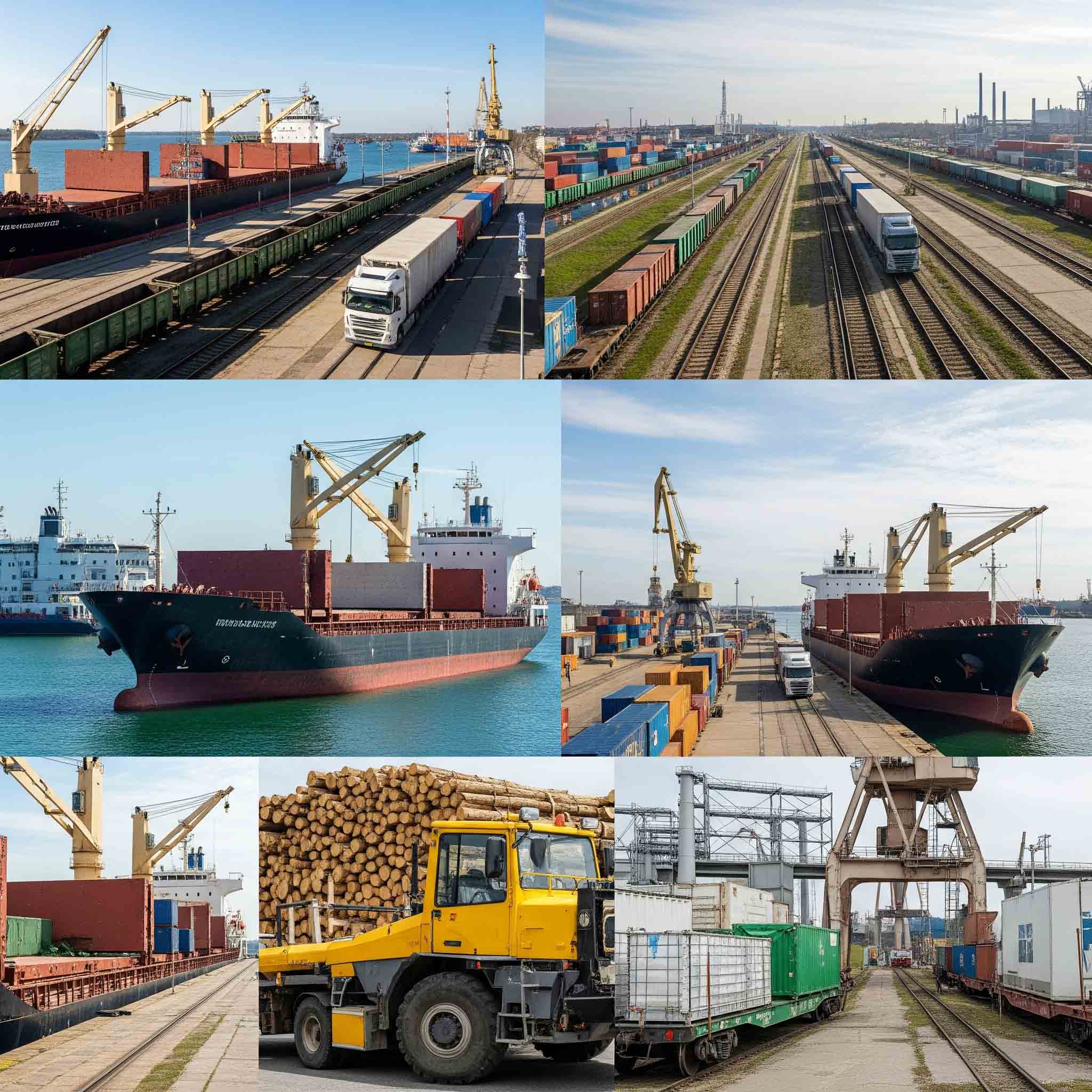
- Details
- Category: Good to know
When unexpected household issues arise or small repairs are needed, many people ask themselves: “Where do I turn?” A handyman is the perfect solution for those who value their time and want reliable, hassle-free help. In this article, we’ll explore the benefits of hiring a handyman and why it's worth trusting professionals.
Read more: Handyman: Why You Should Hire One and What the Benefits Are

- Details
- Category: Good to know
Lithuania, thanks to its unique geographical location at the crossroads of key trade routes between East and West, traditionally holds a strategically important place in the European logistics network. This advantage makes it a critically important hub for international freight transport, effectively connecting the Baltic Sea with vast European and Asian markets.
Despite global and regional challenges, the Lithuanian transport sector demonstrates sustainable growth and dynamism, underscoring its significance for the national economy. In 2024, the volume of freight transport in Lithuania increased by 10.3% compared to the previous year.
This article aims to provide an in-depth analysis of the current state of the Lithuanian freight transport segment. It will identify the key problems companies face, review proposed and already implemented solutions, and outline strategic development prospects for the sector. Special attention will be paid to how businesses can leverage online platforms to strengthen their positions in this dynamic market.
I. Dynamics and Significance of the Lithuanian Freight Transport Market
The Lithuanian transport sector demonstrates impressive dynamics and is one of the pillars of the national economy. In 2024, the volume of freight transport in the country increased by 10.3% compared to the previous year. Excluding pipeline transport, the volume of goods transported grew by 11%, reaching 181.6 million tons.
A significant modal shift has occurred in the Lithuanian freight transport market. Road transport has taken a dominant position, accounting for 75.9% of the total transport volume in 2024. This is a radical change compared to previous years' data: in 2017, the share of railway transport in Lithuania was 66.7%, while road transport accounted for only 33.3%. Similarly, in 2020, road transport accounted for only 35% of the total volume of domestic freight transport, while railway transport accounted for 65%. Such a rapid shift, almost tripling the share of road transport in just four years, indicates fundamental changes in logistics flows and company preferences. This change may be due to geopolitical factors affecting railway transit or operational advantages of road transport, such as flexibility and door-to-door delivery. The increased burden on road infrastructure, in turn, exacerbates existing problems related to road quality, driver shortages, and the lack of sufficient parking spaces, which requires a review of investment priorities and strategic planning.
The volume of tractor transport in 2024 increased by 14.5%, and freight turnover reached 137.9 million tons, which underscores the growing role of road transport in the country's logistics system. At the same time, rail transport showed a decrease of 5.8%, amounting to 25.7 million tons.
It is projected that transport expenditures in Lithuania will reach approximately €7.7 billion by 2028, up from €6.7 billion in 2023. Revenues in this sector are expected to grow to €6.6 billion by 2028 from €5.7 billion in 2023. This corresponds to a stable average annual growth rate of 2.2-2.3%. However, this is a significant slowdown in growth rates compared to historical dynamics: since 2000, demand for transport in Lithuania has grown at a significantly higher average annual rate of 8.6%. Such a slowdown indicates that the market is becoming more mature or facing fundamental limitations, such as market saturation, increased competition, or regulatory barriers. This means that companies will have to operate in conditions of tougher competition and limited opportunities for extensive growth, which makes optimization, efficiency improvement, and the search for niche markets even more critical for maintaining profitability.
The transport sector is one of the key drivers of the Lithuanian economy, generating up to 13% of the country's GDP. Lithuania's strategic location between Europe and Asia, as well as its developed network of road and rail links, including key highways A1 and A2, and Baltic Sea ports, make it an important link in global trade chains.
Table 1: Key Freight Transport Growth Indicators in Lithuania (2023-2024)
| Indicator | Value (2024) |
|---|---|
| Total volume of freight transport (million tons) | 181.6 |
| Percentage growth of freight transport (2024 vs 2023) | 10.3% |
| Share of road transport in total volume (%) | 75.9% |
| Share of road transport (2020) (%) | 35% |
| Dynamics of railway transport (decrease %) | 5.8% |
| Projected transport expenses by 2028 (€ billion) | 7.7 |
| Projected transport revenues by 2028 (€ billion) | 6.6 |
| Share of transport sector in Lithuania's GDP (%) | 13% |
II. Key Challenges Facing Lithuanian Carriers
The Lithuanian transport sector faces a number of serious challenges that require comprehensive solutions to maintain its competitiveness and sustainable development.
Driver Shortage
The scale of the shortage of qualified truck drivers in Lithuania has reached a critical level. By 2023, this deficit amounted to 20,000 people. The annual increase in unfilled positions is 15%, with 40% of transport companies reporting significant difficulties in hiring qualified drivers. In 2024, 12% of truck driver positions remained unfilled, and by 2028, this figure is projected to rise to 18%.
The impact of the driver shortage on Lithuania's economy is tangible: it reduces GDP growth by 0.5-1% annually, leads to a 30% increase in export delays, raises logistics costs by 15-20%, and affects up to 60% of businesses due to supply chain disruptions.
Several factors contribute to this labor shortage. The country's rapid economic growth outpaces the training of new drivers, and the aging workforce is not being compensated by a sufficient influx of young professionals. Additionally, Lithuanian drivers often prefer to work in other EU countries such as Poland, Germany, Denmark, the Netherlands, and Belgium, where working conditions and salaries may be more attractive. The difficulties in hiring from third countries exacerbate the situation: Lithuanian authorities have introduced quotas for the employment of non-EU citizens, which are quickly exhausted. For example, the annual quota of 11,600 work permits for drivers from third countries was fully utilized by May. The Linava Association indicates that due to the driver shortage, one-fifth of the country's vehicle fleet is idle. Despite flexible labor market reforms, business associations criticize restrictive immigration policies that hinder the satisfaction of high labor demand.
Table 2: Impact of Truck Driver Shortage on the Lithuanian Economy

- Details
- Category: Good to know
Looking for a Quality Tile Setter in Vilnius? You're Not Alone.
When searching for a reliable craftsman to lay ceramic tiles in Vilnius, many people encounter various difficulties. From a shortage of qualified specialists to issues with trust and work quality, these are just some of the challenges faced by residents of the Lithuanian capital. This article will discuss the main problems customers face, offer solutions, and show how our website can help you find reliable craftsmen.
Read more: Looking for a Quality Tile Setter in Vilnius? You're Not Alone.

- Details
- Category: Good to know
Neatify offers a wide range of professional cleaning services tailored to your needs and schedule. Our team of experienced specialists guarantees high-quality service using modern technologies and eco-friendly products.
- Details
- Category: Good to know
Creating a unique ad text is a key part of successful search engine optimization. Google values original, helpful, and relevant content — and it’s these ads that are most likely to rank high in search results. In this article, we’ll explore how to write ad copy that captures attention and is efficiently indexed by Google.
Read more: How to Create a Unique Ad Text So Google Indexes It Well
- Legendary MMORPG that has attracted players from all over the world for years Line Age II Online
- Tattoos in Lithuania: a complete guide to choosing a salon, master and style.
- Sanilux: expert in building swimming pools, baths and spas - everything for your perfect vacation
- Why the tea ceremony is relevant today

 LT
LT  EN
EN  RU
RU